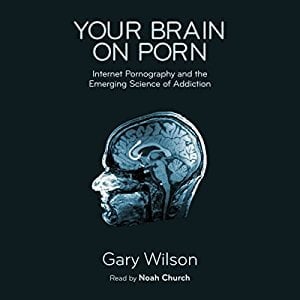The 2nd edition of Your Brain on Porn: Internet Pornography and the Emerging Science of Addiction is now out. It’s revised, a bit longer, and has more citations and up-to-date research. More (Audio version now available from UK too.) Visit Amazon. Wilson’s proceeds go to a registered charity endeavoring to raise awareness of internet porn’s effects. Here’s an excerpt:
For the last nine years, I have been paying attention to what people say about their experiences with pornography. For even longer, I’ve been studying what scientists are learning about how our brains work. I am here to tell you that this isn’t about liberals and conservatives. It isn’t about religious shame or sexual freedom.
This is about the nature of our brains and how they respond to cues from a radically changed environment. This is about the effects of chronic overconsumption of sexual novelty, delivered on demand in endless supply. This is about youthful access to limitless hardcore streaming videos – a phenomenon which is moving so quickly that researchers have not been able to stay current. For example, a 2008 study reported that 14.4 percent of boys were exposed to porn prior to age 13.
By the time stats were gathered in 2011, early exposure had jumped to 48.7 percent. A 2017 cross-sectional study of Australians age 15-29 reports that 69 percent of males and 23 percent of females first viewed porn at age 13 or younger. All of the males and 82 percent of the females had viewed pornography at some point.
Similarly, daily porn viewing was rare in the 2008 study (5.2%), but by 2011, more than 13 percent of adolescents viewed porn daily or almost daily. In 2017, 39 percent of males and 4 percent of females (age 15-29) view daily, often on their smartphones.
